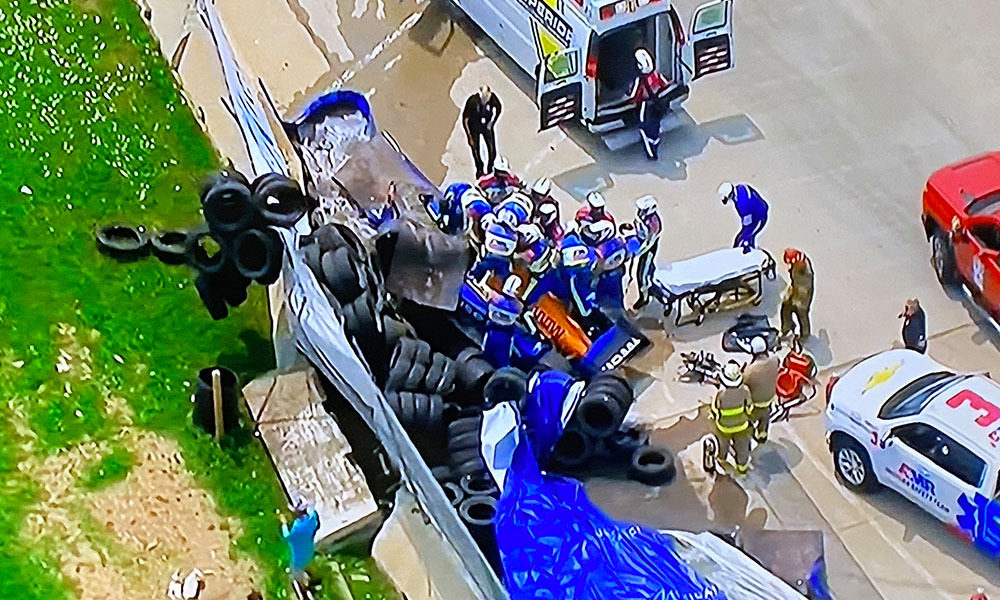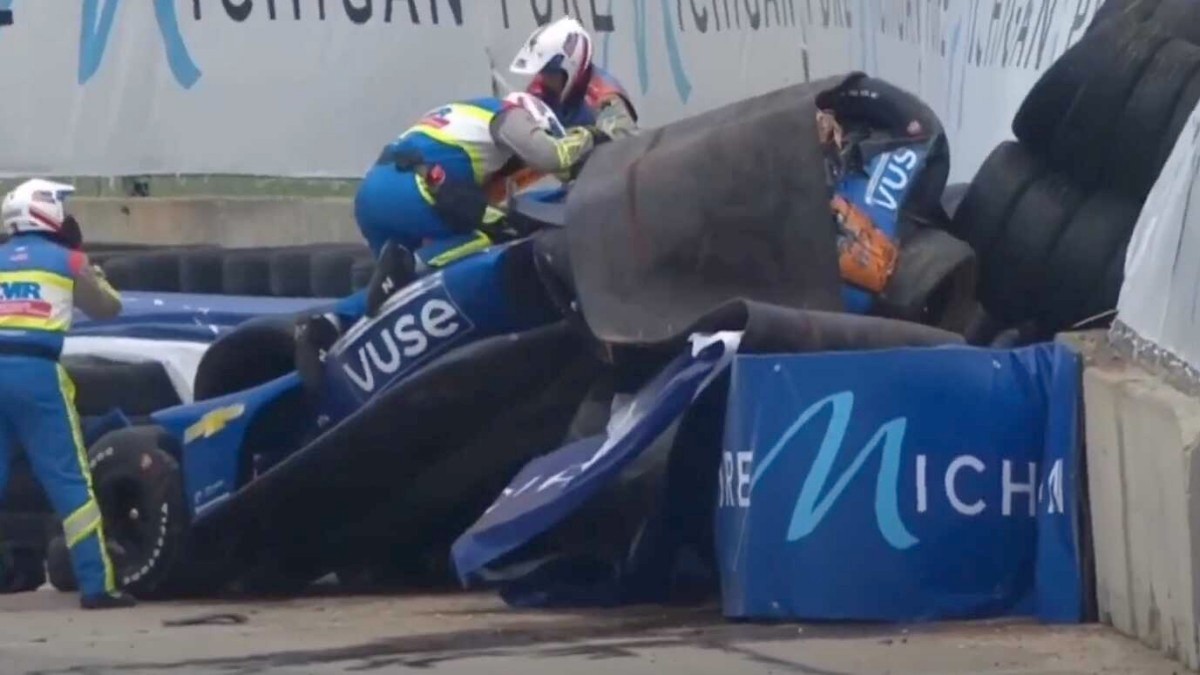IndyCar: Some serious concerns about Felix Rosenqvist’s accident
I’m going to assume you’ve seen Felix Rosenqvist’s crash in Detroit. As the Swedish driver was approaching turn 6 in Saturday’s race 1 of the Chevrolet Detroit Grand Prix presented by Lear, his throttle appeared to “stick.” The No. 7 Arrow-McLaren SP Chevrolet hit the turn 6 tire barrier nearly head on, which allowed the nose of his car to push the tires back and climb up the tire wall. The impact was so strong that the concrete wall behind the tire barrier was knocked over.
Rosenqvist spent the evening at DMC Detroit Receiving Hospital and missed Sunday’s race, but had no serious injuries.
Before moving ahead, let me note I will have a subsequent article later in the week addressing some of the other subjects from this past weekend in my traditional postscript. However, given the detail needed to discuss Rosenqvist’s accident, we’ve decided to split the articles this week, with this article focusing on the crash.
Of course, it should be acknowledged that there is no such thing as a perfect safety system, and that race safety is and will always be a compromise. For example, everyone agrees that the SAFER Barrier is a marvel. However, there are many tracks, including the Indianapolis Motor Speedway, that are not entirely outfitted with the barrier. Why? Well, the SAFER Barrier costs about $1.5 million a mile. Tracks have obviously made a cost/benefit analysis and opted to place the Barrier in strategic spots given the cost.
As for this weekend’s crash in Detroit, let’s start by applauding Dallara, INDYCAR, and event organizers for having systems in place that saved Rosenqvist from serious injury and/or worse. Similar to Romain Grosjean’s crash last year in the Bahrain Grand Prix, Rosenqvist’s car hit head-on in a spot where most cars hit at more of an angle, and the safety systems are designed with angular impacts in mind. In other words, given the speed and unusual trajectory, to a large degree, the safety systems in Detroit exceeded their intended design and purpose in protecting Rosenqvist.
The above noted, there are some concerns from the crash that need to be addressed. For starters, what exactly explains what appeared to be a stuck throttle?
Arrow McLaren SP released a statement absolving Rosenqvist and Chevrolet, noting that it was a “mechanical,” failure. This, of course could mean a variety of things. I suppose, the statement was effective from a PR standpoint in that it absolved the engine manufacturer and conveyed the message that the team was on top of the issue without implicating any party directly. That said, a stuck throttle is something that needs to be examined in depth by the series and various suppliers. And at the risk of being difficult, I’m not exactly the type to say, “hey guys, that’s great you’re on top it; onward and upward,” a few hours after such a violent crash.
Given that I don’t think we’re ever going to get a definitive answer, we have to hope that the series, teams, and suppliers do in fact have a handle on what exactly happened; or that they will perform the due diligence necessary to get to the bottom of the issue.
One thing that is clear from the crash is that the tire barriers at the exit of the turn were destroyed. Assuming, the tire barriers were properly constructed, given the speed and trajectory, it is understandable that the impact destroyed the bolts and/or ropes that keep the tire barriers together.
A bigger concern – and one that we can evaluate more thoroughly – would be the concrete barrier falling over. Yes, the barrier absorbed a tremendous impact, and the fact Rosenqvist’s car got elevated means his car hit the top side of the barrier, which likely contributed to the barrier going down. Now, it should be noted that the barrier “giving” very well may have mitigated the impact on Rosenqvist. In essence, the concrete barrier acted similar to a SAFER Barrier if you will.

That said, concrete barriers are not foam barriers. They are intended to be impenetrable instruments, last barriers. And their primary responsibility is the protection of spectators, safety workers and other personnel, followed by competitors.
In other words, imagine if a photographer had been standing behind the concrete barrier resting his lens on it when it fell over backwards. What about a marshal? In such scenarios, we would not be focusing on the fact Rosenqvist came away relatively unscathed.
Now, is the above meant to indict INDYCAR, race organizers, or anyone else? Not at all. As previously stated, the combination of speed and trajectory were about as much as we’ve seen a safety system be required to endure. Also, all parties involved helped design systems that means Rosenqvist may, in fact, race this coming weekend at Road America. We should all be thankful for the advancements that make such things possible.
However, why exactly the concrete barrier came apart cannot be overlooked either.
Was it the unusual height of Rosenqvist’s impact?
Was there something unsound about the poles that connect the walls together?
Was there something not up to standard with the construction of the barrier?
It’s hard to say without a full report. But these are questions the series should be asking. While it could be that the Rosenqvist crash penetrated a threshold of safety not previously explored, one can’t assume everyone will be as fortunate next time.
Brian Carroccio is a senior columnist for AutoRacing1.com. He can be contacted at BrianC@AutoRacing1.com.
